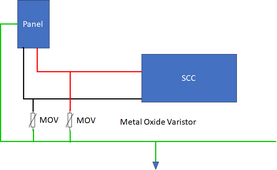I follow Ben Davidson's Suspicious 0bservers (with a zero not an 'O').
I am working on an 1800w array that is a series of panels of two types, adding up to a working voltage of around 180v, and around 10amps {although, I have seen it produce 2200 watts at one time!}. It feeds a Growatt SPF 3000 TL LVM ES hooked to a couple of EG4 batteries (10kw).
The batteries have their own built-in breakers. The metal frame of the solar array is properly grounded. I've seen recommendations of in-line MC4 fuseholders and fuses. I want to know what the best way is to protect the Growatt from some kind of surge from the panels. And, what kind of shut-off to use, with the highest voltage rating.
Thanks!
I am working on an 1800w array that is a series of panels of two types, adding up to a working voltage of around 180v, and around 10amps {although, I have seen it produce 2200 watts at one time!}. It feeds a Growatt SPF 3000 TL LVM ES hooked to a couple of EG4 batteries (10kw).
The batteries have their own built-in breakers. The metal frame of the solar array is properly grounded. I've seen recommendations of in-line MC4 fuseholders and fuses. I want to know what the best way is to protect the Growatt from some kind of surge from the panels. And, what kind of shut-off to use, with the highest voltage rating.
Thanks!





